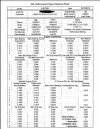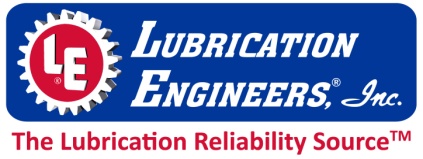20 grade oils are recommended strictly to help the manufacturer meet the yearly CAFE standards, there’s no other reason because 20 grade oils do not perform “better“ than other grades such as 30 or 40. If that were so then there would be no reason for manufacturers to recommend anything but 0W or 5W-20 oils for everything and that is simply not the case. There are numerous modern engines with the supposed “tight“ clearances that recomend higher grades, FCA/Stellantis has at least two. The 2.0L turbocharged Hurricane engine in my Jeep requires 5W-30 and the owners manual actually specifies that it has to be synthetic, and the SRT engines require 0W-40. Outside FCA/Stellantis there are numerous examples, there’s a reason the Corvette comes from the factory with 0W-40 and not 0W-20 like the Sierra, Silverado pickups. Obviously 0W-20 does not provide adequate minimum oil film thickness (MOFT) to protect these engines so a thicker oil is required.
Obviously 5W-20 will provide adequate protection for the 5.7L engines under most conditions, FCA did extensive testing before switching to 5W-20 to ensure that engines weren’t going to self destruct on it, but I’m still waiting for someone to explain how cold, thick 5W-20 can be circulated through these ”tight” clearances but 5W-30 can’t. And how can 5W-20 be better at fitting through those tiny little passages in an engine starting at -15F in North Dakota than 5W-30 in moderate to warm temperatures that is thinner at startup that the 5W-20 in North Dakota is?
As to the manufacturers back specing the 20 grade recommendations to previous years that may be explained in the excerpt below from the NHTSA sites section on the CAFE rules, the Carry back rule states that credits can be applied for three previous model years, that may explain it, but I don’t know for sure.
CAFE Overview
NHTSA’s CAFE program requires manufacturers of passenger cars and light trucks, produced for sale in the U.S., to meet CAFE standards, expressed in miles per gallon (mpg). The purpose of the CAFE program is to reduce the nation’s energy consumption by increasing the fuel economy of cars and light trucks. Fuel economy standards improve our nation’s energy security, address climate change and save consumers money at the pump. NHTSA establishes separate passenger car (including domestic and import passenger cars) and light truck fleet standards at “the maximum feasible average fuel economy level that it decides the manufacturers can achieve in each model year.” See the
United States Code provisions governing the CAFE program. Manufacturers’ compliance obligations are based on the vehicles that are produced for sale in the U.S. in a model year within each of the three fleets: domestic passenger cars (DP), import passenger cars (IP) and light trucks (LT).
Once a manufacturer’s CAFE standard is calculated for each of its fleets, NHTSA compares each of the fleet’s actual mpg performance against the applicable standard. If a manufacturer’s actual average mpg level for a given fleet exceeds the applicable standard, then the manufacturer earns “credits.” A credit is earned for each 1/10 of an mpg in excess of the fleet’s standard mpg and the actual average mpg. Total credits are calculated as the number of tenths of an mpg (1/10 mpg) times the number of vehicles produced for that fleet. On the other hand, if a manufacturer’s actual average mpg level for a given fleet does not meet the applicable standard, then the manufacturer has a “shortfall” for that fleet. Shortfalls can be satisfied by using one of the following compliance flexibilities:
- Carry forward - credits earned in a particular model year can be carried forward and applied for up to five model years after the year in which the credits were earned.
- Carry back – credits earned in a particular model year can be carried backward and applied for up to three model years before the year in which the credits were earned.
- Civil penalty – manufacturers can pay a civil penalty equal to $5.50 per credit shortfall
- Trade – manufacturers can acquire credits from other manufacturers or credit holders.
- Transfer – manufacturers can transfer credits from one of their fleets (DP, IP, or LT) to one of their other fleets













